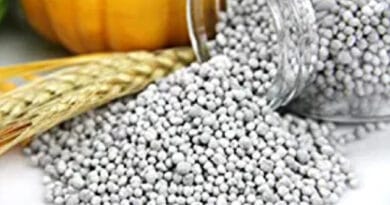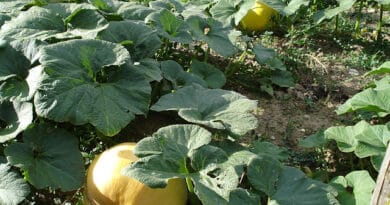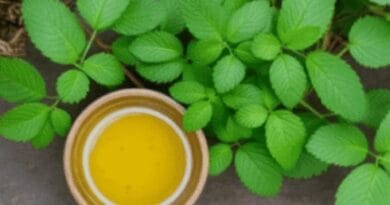Know About 26 Govt. Scheemes for the welfare of the Indian Farmers
Brief Details of Agriculture Ministry Schemes for the Welfare of the Small and Marginal Indian Farmers
The government has started many programs, plans, and policies to help farmers. These efforts aim to make farming more efficient by using resources wisely, which helps lower costs, boost crop output, provide better returns, and support farmers’ income. These initiatives have helped increase farmers’ income either directly or through indirect means. These include:
A) Central Government Agricultural Schemes in India;
1) PM-KISAN SAMMAN NIDHI:

- Launched on February 24, 2019, PM-KISAN is a central sector program designed to help landholding farmers with their financial requirements, subject to certain limitations.
- Under the initiative, farmers’ families nationwide receive a monetary benefit of Rs. 6000/-per year in three equal four-monthly installments into their bank accounts via Direct Benefit Transfer (DBT) mode.
- To date, over 11 crore farmers have benefited from Direct Benefit Transfers (DBT) in the form of various installments totaling Rs. 2.81 lakh crores.
- With the release of the 19th installment, 9.8 crore farmers nationwide—including 2.41 crore women farmers—will receive direct financial assistance totaling over ₹22,000 crore through Direct Benefit Transfer (DBT) without the need for intermediaries, reaffirming the government’s commitment to agricultural prosperity and farmer welfare.
- 9.7 crore farmers would receive Rs 20,500 crore in the 20th installment. During his visit to Varanasi on August 2, 2025, Prime Minister Narendra Modi will distribute the 20th installment of PM-Kisan Samman Niddhi to qualified recipients.
- Important Links Regarding PM Kisan Yojna;
Complete e-KYC for Pradhan Mantri Kisan Samman Nidhi PM-Kisan
Check the Status of Your Pradhan Mantri Kisan Samman Nidhi PM-Kisan Application
Register as a New Farmer for Pradhan Mantri Kisan Samman Nidhi PM-Kisan
Extension Reforms Monitoring System, Department of Agriculture, and Farmers Welfare
2) PM-KMY, or Pradhan Mantri Kisan MaanDhan Yojana:

- A central sector program called Pradhan Mantri Kisan Maandhan Yojna (PMKMY) was introduced on September 12, 2019, with the goal of giving the most vulnerable farmer households protection.
- Small and marginal farmers (SMFs) who meet the eligibility requirements can choose to join PM-KMY, a contributory program, by making a monthly subscription to the Pension Fund.
- The Central Government will contribute a comparable sum. Until they turn 60, applicants between the ages of 18 and 40 must make monthly contributions ranging from Rs. 55 to Rs. 200.
- Upon reaching 60 years of age, enrolled farmers would get a pension of Rs. 3,000 per month from PMKMY, which provides care for farmers in their later years, subject to exclusion conditions.
- The CSC and state governments handle beneficiary registration for the Life Insurance Corporation (LIC), which manages pension funds. 23.38 lakh farmers have signed up for the program thus far.
3) Pradhan Mantri Fasal Bima Yojana (PMFBY):
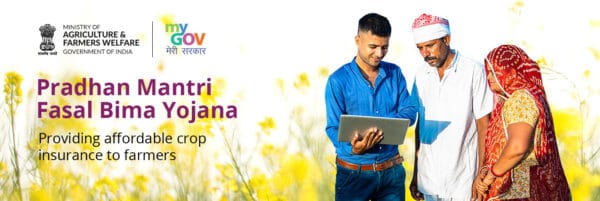
- To give farmers complete risk coverage for their crops against all unavoidable natural hazards from pre-sowing to post-harvest and to provide a sufficient claim amount.
- PMFBY was introduced in 2016 as a straightforward and reasonably priced crop insurance policy.
- The program is open to all farmers and is driven by demand. Since 2016–17, the program has insured 5549.40 lakh farmer applications, and claims of Rs 150589.10 crore have been paid.
4) Scheme for Modified Interest Subvention (MISS)

Modified-intrest-Subvention-scheeme
- Concessional short-term agricultural loans are offered by the Interest Subvention Scheme (ISS) to farmers engaged in crop husbandry and related industries such as dairying, fisheries, and animal husbandry.
- Farmers who want to take out short-term crop loans up to Rs. 3 lakh at a 7% annual interest rate for a year can apply for ISS.
- The farmers receive an additional 3% subsidy for timely loan return, which lowers the effective annual interest rate to 4%.
- Small and marginal farmers with Kisan Credit Cards (KCCs) can additionally benefit from ISS for post-harvest loans against Negotiable Warehouse Receipts (NWRs) on crop loans for an additional six months after harvest.
- In the event of natural disasters and severe natural disasters.
- As of May 1, 2024, 465.42 lakh new KCC applications have been approved as part of the initiative, with a sanctioned credit amount of Rs. 5,69,974 crore.
5) Agriculture Infrastructure Fund (AIF):
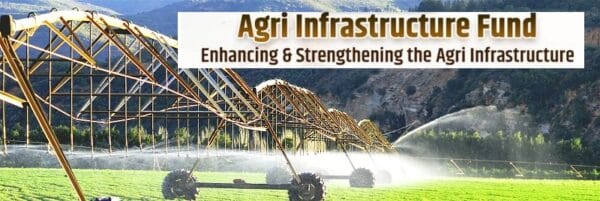
AGRICULTURE-INFRA-STRUCTURE-FUNDS-
- Under the Aatmanirbhar Bharat Package, the Agri Infra Fund was established to fill up the current infrastructure gaps and encourage investment in agricultural infrastructure. AIF was established to revolutionize the nation’s agricultural infrastructure.
- Through interest subvention and credit guarantee support, the Agriculture Infrastructure Fund is a medium- to long-term debt financing tool for investments in feasible projects for community farming assets and post-harvest management infrastructure.
- The scheme’s Rs. 1 lakh crore fund will be distributed between FY 2020–21 and FY2025-26, and the support will be offered between FY2020–21 and FY2032-33.
- Banks and other financial institutions would offer Rs. 1 lakh crore in loans under the plan, with interest subvention of 3% annually and credit guarantee coverage under CGTMSE for loans up to Rs. 2 crore.
- Furthermore, up to 25 projects spread across various LGD codes are eligible for the scheme’s benefits for each business.
- Farmers, agri-entrepreneurs, start-ups, marketing cooperative societies, farmer producer organizations (FPOs), self-help groups (SHG), joint liability groups (JLG), multipurpose cooperative societies, public-private partnership projects sponsored by central or state agencies or local bodies, state agencies, agricultural produce market committees (Mandis), national and state cooperative federations, federations of FPOs (farmer produce organizations), and federations of SHGs are among the eligible beneficiaries.
- As of December 31, 2023, a total of Rs. 25,504 crores of the Rs. 33.209 crores that have been approved for 44,912 projects under the AIF are covered by program benefits.
- A total of Rs 56.471 crores has been invested in the agriculture sector as a result of these approved projects.
6) Formation & Promotion of new 10,000 FPOs:
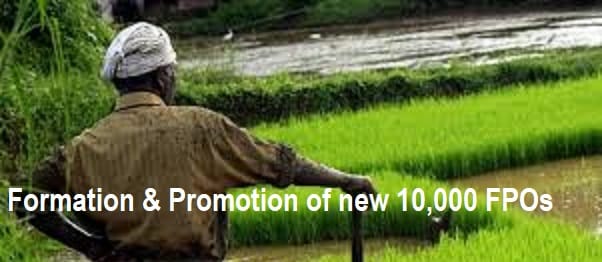
- In 2020, the Central Sector Scheme (CSS) for the “Formation and Promotion of 10,000 Farmer Producer Organizations (FPOs)” was introduced by the Indian government.
- The entire budgetary investment for the plan is Rs. 6865 crores.
- Implementing Agencies (IAs) are responsible for the creation and promotion of FPOs. They also work with Cluster Based Business Organizations (CBBOs) to establish and offer FPOs expert handholding support for a duration of five years.
- For three years, FPOs receive financial assistance of up to Rs 18.00 lakh each. To guarantee institutional credit accessibility to FPOs, provisions have also been made for a credit guarantee facility up to Rs. 2 crore of project loan per FPO from eligible lending institutions and a matching equity grant up to Rs. 2,000 per farmer member of the FPO, with a limit of Rs. 15.00 lakh per FPO. Appropriate measures have been taken to support FPOs’ skill development and training.
- Additionally, FPOs are integrated into the National Agriculture Market (e-NAM) platform, which enables them to trade their agricultural commodities online using a transparent price discovery mechanism, allowing them to obtain more profitable pricing for their produce.
- As of December 31, 2023, 7,774 FPOs nationwide were registered under the program.
7) National Beekeeping and Honey Mission (NBHM):
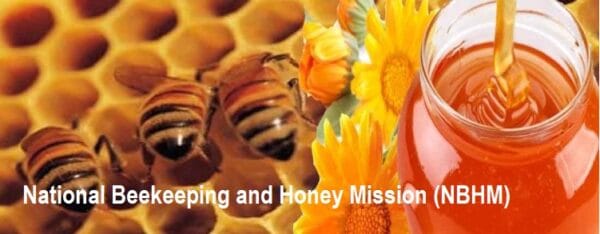
- Given the significance of beekeeping, the National Beekeeping & Honey Mission (NBHM), a new Central Sector Scheme under the Atma Nirbhar Bharat Abhiyan, was introduced in 2020 to achieve the “Sweet Revolution” and promote and develop scientific beekeeping in general.
- Among the accomplishments are Beekeeping, and honeybees have been authorized as the fifth agricultural input.
- The National Beekeeping & Honey Mission (NBHM) has authorized four world-class, state-of-the-art honey testing labs and thirty-five little honey testing labs for honey testing.
- The Madhukranti portal has been made available for beekeepers, honey societies, firms, and companies to register online.23 lakh bee colonies have been registered on the portal thus far. Under the nation’s 10,000 FPOs program.
- 100 Honey FPOs are targeted. So far, NAFED, NDDB, and TRIFED have registered 88 FPOs. MM-I, II, and III have covered 25 States/UTs under NBHM. 60 projects totaling Rs. 202.00 crores were approved under MM-I, II, and III.
8) Market Intervention Scheme and Price Support Scheme (MIS-PSS):
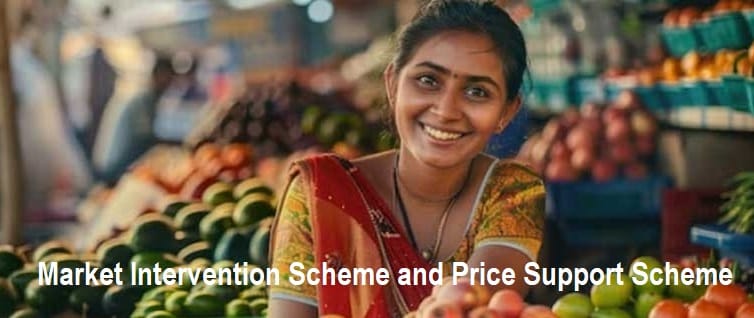
- The Market Intervention Scheme (MIS) is used to purchase agricultural and horticultural products that are perishable and not covered by the Price Support Scheme (PSS).
- The Price Support Scheme (PSS) is implemented by the Ministry of Agriculture & Farmers Welfare for the purchase of pulses, oilseeds, and copra.
- : In the event of a bumper crop during the peak arrival period, when prices tend to drop below economic levels and production costs, the intervention’s goal is to shield the producers of these commodities from having to make distress sales.
9) Didi Namo Drone Yojana :
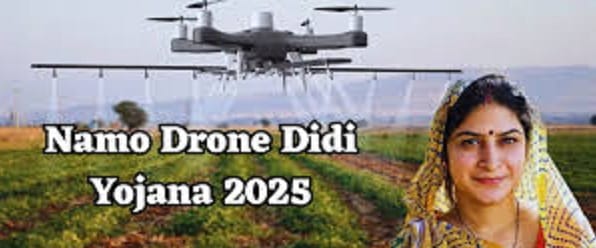
- With an investment of Rs. 1261 crores, the government recently approved a Central Sector Scheme to supply drones to Women Self Help Groups (SHGs) between 2024–2025 and 2025–2026.
- The program intends to supply drones to 15,000 carefully chosen Women Self Help Groups (SHGs) so they can rent them to farmers for agricultural purposes (pesticide and fertilizer application).
- Under this scheme, women’s self-help groups (SHGs) would receive Central Financial Assistance for the purchase of drones, covering 80% of the cost of the drone and any additional costs, up to a maximum of Rs. 8.0 lakhs.
- The remaining sum (total cost of procurement less subsidy) may be raised as a loan under the National Agriculture Infra Financing Facility (AIF) by the Cluster Level Federations (CLFs) of SHGs. The CLFs will get a 3% interest subvention on the AIF loan.
- SHGs would also receive sustainable business and livelihood support under the initiative, enabling them to generate an extra income of at least Rs. 1.0 lakh annually.
B) Centrally Sponsored Schemes:
1) Rastriya Krishi Vikas Yojna:
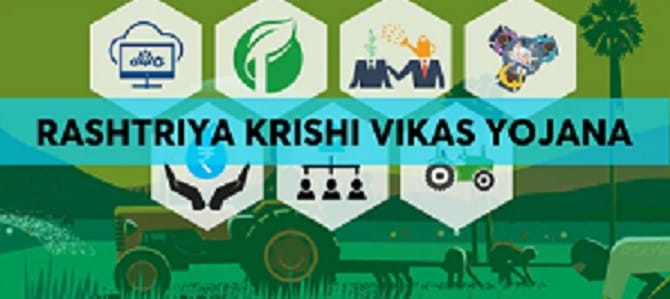
- The program’s main goal is to build pre- and post-harvest infrastructure in agriculture and related fields so that farmers may receive high-quality supplies, market facilities, and other necessities. From a variety of operations in agriculture and related industries.
- It gives states the freedom and authority to carry out initiatives under the requirements and objectives of local farmers.
- By giving governments financial support for a range of initiatives aimed at boosting the overall growth of agriculture and related sectors as well as farmers’ income.
- The program seeks to close the resources gap in these sectors.Since 2019–20, 1524 startups have been chosen under the RKVY Agri-startup Program, and grants of Rs. 106.25 crore have been made available to fund the startups.
2) Card for Soil Health (SHC):

- In addition to offering advice on the proper nutrient dosage to be applied in order to improve soil fertility and health, the soil health card gives farmers information about the nutrient state of their soil.
- Usually, farmers’ real-world experience and understanding of the local natural resources serve as the basis for the indicators.
- The card enumerates markers of soil health that can be evaluated without the need of laboratory or technical equipment.
- In order to create a national soil fertility map on a GIS platform that can be readily connected with the real-time decision support systems under development, the Scheme introduces a decentralized soil testing system.
- The Indian government has committed to collect five crore soil samples nationwide between 2023–2024 and 2025–2026 in order to create a map of soil fertility.
3) Rainfed Area Development (RAD):

- RAD has been in use since 2014–2015. The Integrated Farming System (IFS), which emphasizes multi-cropping, rotational cropping, inter-cropping, and mixed cropping practices with related activities like horticulture, livestock, fisheries, apiculture, etc., is promoted by RAD using an area-based approach in cluster mode.
- This helps farmers not only maximize farm returns for sustaining livelihoods but also lessen the effects of drought, flood, and other extreme weather events.
- Through the RAD program, an area of 7.13 lakh hectares has been covered from 2014–15 to the present, and a total of Rs. 1673.58 crores has been released.
4) Per Drop More Crop (PDMC).

- The Per Drop More Crop (PDMC) program was introduced in 2015–16 to increase water use efficiency at the farm level utilizing Micro Irrigation technologies, including drip and sprinkler irrigation systems.
- Through fertigation, micro irrigation helps farmers save water and fertilizer, which lowers labor costs and other input costs while also increasing their overall income.
- In order to augment the construction of sources for micro irrigation, it also facilitates micro-level water harvesting, storage, management, and other activities as Other Interventions (OI).
- OI operations are permitted up to 40% of the total budget for the North East States, Himalayan States, Jammu & Kashmir, and Ladakh, and up to 20% for the remaining states, depending on necessity.
- Through the PDMC initiative, 78 lakh hectares were covered by microirrigation between 2015–16 and 2022–23.
6) Micro Irrigation Fund (MIF):
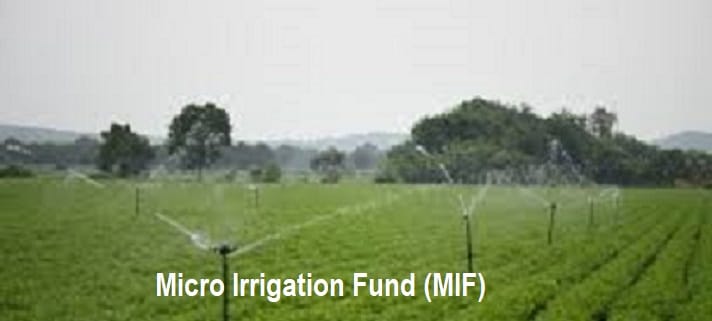
- Together with NABARD, a Micro Irrigation Fund (MIF) with an initial corpus of Rs 5000 crore was established with the primary goal of assisting the States in raising funds to increase the scope of micro irrigation.
- As part of the funding agreement, NABARD lends to the States and UTs at an interest rate that is 3% less than the cost of the funds that NABARD has raised from the market
- Under PDMC, the Center bears the interest subvention on the loan under MIF.
- Up to now, projects totaling Rs 4710.96 crore have been sanctioned with financing under MIF. The states of Andhra Pradesh, Tamil Nadu, Gujarat, Punjab, Haryana, and Rajasthan have received loans totaling Rs. 2812.24 crore.
- When a state borrows money from the PDMC Scheme, the Ministry offers interest subsidies.
- According to the Budget 2021–2022, the fund’s corpus would treble to Rs. 100,000 crores. PDMC and MIF have now amalgamated.
7) Paramparagat Krishi Vikas Yojana (PKVY) :
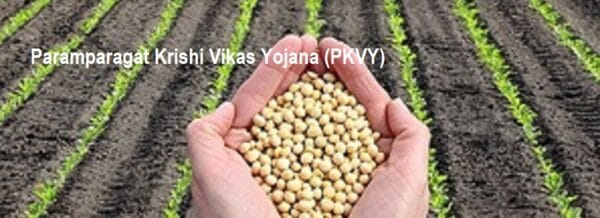
- The goal of the Paramparagat Krishi Vikas Yojana (PKVY) is to improve soil fertility, which will aid in the production of nutritious food using organic methods devoid of agrochemicals.
- The plan is carried out in a cluster mode, with a 20-hectare unit cluster size.
- A minimum of 20 farmers must be part of the organization; if individual holdings are smaller, the number may be higher.
- According to PKVY provisions, a group of farmers may benefit from a maximum of 2 ha. To make it easier to market organic produce, 25 of these clusters are combined into a single, sizable cluster covering over 500 hectares.
- The program gives states Rs. 31,500 per hectare of support, of which Rs. 15,000 is provided to farmers directly through DBT as incentives.
8) Sub-Mission on Agriculture Mechanization (SMAM):
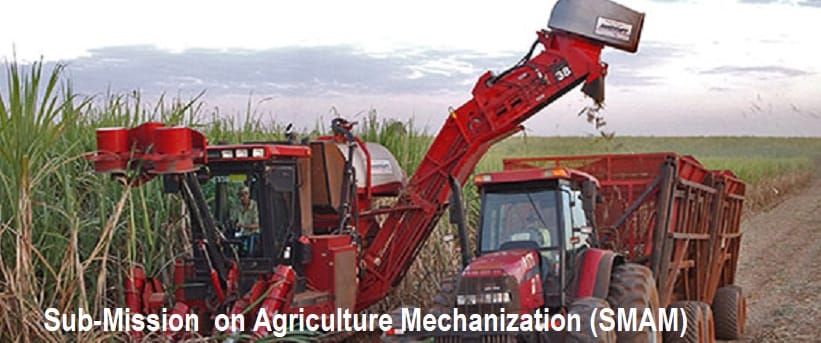
With effect from April 2014, the Sub-Mission on Agricultural Mechanization (SMAM) is being implemented with the objectives of:—
- Expanding the reach of farm mechanization to small and marginal farmers and areas with limited farm power availability; promoting “Custom Hiring Centers” to counteract the negative economies of scale resulting from small landholding and the high cost of individual ownership.
- Establishing hubs for high-tech and high-value farm equipment.
- Raising awareness among stakeholders through demonstration and capacity building activities.
- Ensuring performance testing and certification at designated testing centers spread throughout the nation.
- More than 15,75,719 pieces of agricultural machinery and equipment, such as tractors, power tillers, self-propelled machinery, and plant protection equipment, have been distributed to State Governments, totaling Rs. 6748.78 Crore to date.
- Additionally, 23472 Custom Hiring Centers, 504 Hi-Tech Hubs, and 20597 Farm Machinery Banks have been established.
- The Standard Crop Specific Operating Procedures (SOPs) for the use of drones in pesticide and nutrient application were released in the public domain on April 20, 2023, in response to the special benefits of drone technologies in agriculture.
- These SOPs offer clear guidelines for the safe and efficient operation of drones
- A total of Rs 138.82 crores has been released from SMAM funds thus far for the Kisan drone promotion.
- This includes buying 317 drones for demonstration on 79070 hectares of land, giving 461 drones to farmers on a subsidy, and giving 1595 drones to CHCs so they can rent drone services to farmers.
9) Crop Residue Management :
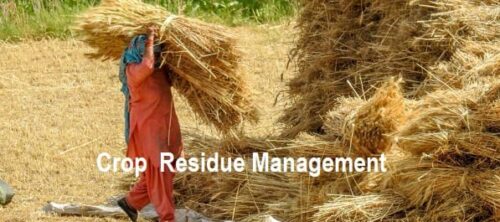
- In Punjab, Haryana, Uttar Pradesh, and the National Capital Territory of Delhi, crop residue management was put into practice from 2018 to 2019.
- By encouraging in-situ management of crop residue, it aims to reduce the loss of nutrients and soil microorganisms brought on by burning of agricultural leftovers and to safeguard the environment from air pollution.
- In this context, it suggests establishing Farm Machinery Banks to provide customized in-situ crop residue management equipment rentals.
- Through demonstrations, capacity-building exercises, and unique information, education, and communication tactics for efficient crop residue use and management.
- It also seeks to raise awareness among stakeholders.
- Since the program’s commencement, more than 2,95,845 CRM machines have been supplied, totaling Rs. 3333.17 crore. CRM and SMAM have now been combined.
10) Agro-forestry;

- In order to encourage plantations on farmlands, the National Agro-forestry Policy of 2014 recommended agro-forestry.
- The goal of RKVY’s reorganized agroforestry program is to offer Quality Planting Materials (QPM) and certification to encourage tree planting on agricultural land and enhance farmers’ livelihoods.
B(2) Krishonnati Yojana:
1) National Food Security Mission (NFSM)

- In the designated districts of 28 States and 2 UTs (i.e., J&K and Ladakh), the Mission seeks to increase production of rice, wheat, pulses, coarse cereals (Maize and Barley), and Nutri-Cereals through area expansion and productivity development in a sustainable way.
- Restoring soil fertility and production at the individual farm level, improving the farm level economy to boost farmer confidence, and post-harvest value addition at the farm gate are other goals.
- In order to accomplish the goal of the International Year of Millets (IYM) 2023 and promote Indian millets internationally, the government has adopted a proactive multi-stakeholder engagement approach since the UNGA declared it in 2021.
- To guarantee the nation’s access to high-quality seed of the newest, improved Nutri cereal kinds, 25 seed hubs have been set up. Thirteen states—Odisha, Tamil Nadu, Chhattisgarh, Assam, Karnataka, Madhya Pradesh, Maharashtra, Uttarakhand, Uttar Pradesh, Bihar, Himachal Pradesh, Gujarat, and Rajasthan—have seen the commencement of millet missions.
- There are currently 350 FPOs and more than 500 start-ups operating in the millet ecosystem.
2) Sub-Mission on Seed and Planting Material (SMSP):
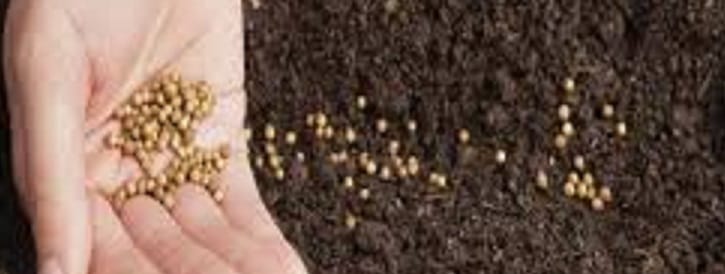
- From the production of nucleus seed to the distribution of certified seeds to farmers, SMSP encompasses the full range of the seed production chain.
- It also supports the establishment of infrastructure that fosters the growth of the seed industry, helps public seed producing organizations increase the capacity and quality of their seed production, establishes a dedicated seed bank to handle unanticipated situations arising from natural disasters, etc.
- Launched on April 19, 2023, the first phase of the Seed Authentication, Traceability & Holistic Inventory (SATHI) site aims to provide efficient, transparent, and effective monitoring of the Seed chain from Nucleus to Breeder to Foundation to Certified Seed. NFSM and SMSP have now been combined.
3) National Mission on Edible Oils (NMEO)-Oil Palm :
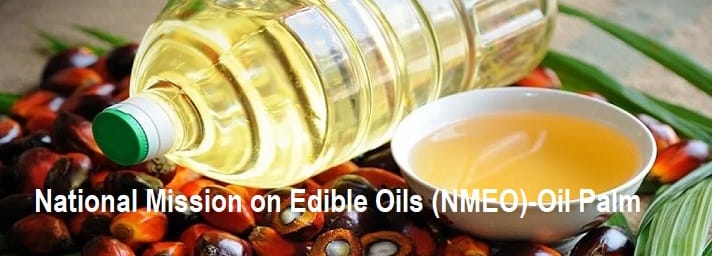
- In 2021, the Indian government introduced a new centrally sponsored program called the National Mission on Edible Oil (NMEO)-Oil Palm (NMEO-OP) to encourage the production of oil palm in order to make the nation Aatmanirbhar in edible oils, with a particular emphasis on the A&N Islands and the northeastern states.
- Over the next five years, from 2021–2022 to 2025–2026, the Mission will add 6.5 lakh hectares of oil palm plantations, with 3.28 lakh hectares in the northeastern states and 3.22 lakh hectares in the remaining parts of India.
4) Mission for Integrated Development of Horticulture (MIDH)

- To promote the holistic development of the horticulture industry, which includes fruits, vegetables, root and tuber crops, mushrooms, spices, flowers, aromatic plants, coconut, cashew, cocoa, and bamboo, the Mission for Integrated Development of Horticulture (MIDH), a centrally sponsored scheme, was introduced in 2014–2015.
- The development of plantation infrastructure, the creation of new fruit, vegetable, spice, and flower orchards and gardens, the revitalization of old, senile, and unproductive orchards, protected cultivation, the encouragement of organic farming, pollination support through beekeeping, horticulture mechanization, post-harvest management (phm), and marketing infrastructure are some of the key elements.
- A further 12.95 lakh hectares of identified horticulture crops have been covered under MIDH from 2014–15 to 2023–24 (as of October 31, 2023); 872 nurseries have been established to produce high-quality planting material; 1.41 lakh hectares of old and senile orchards have been rejuvenated; 52069 ha have been covered under organic practices; and 3.07 lakh ha have been covered under Protected Cultivation..
5) National Bamboo Mission (NBM)
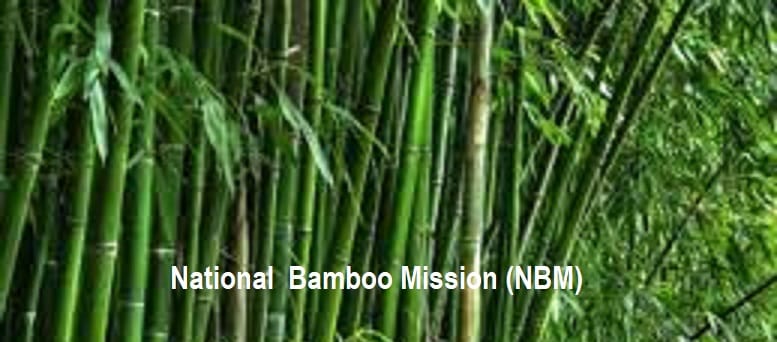
- The State Bamboo Missions (SBM)/State Bamboo Development Agency (SBDA) are responsible for implementing the scheme in 23 States and 1 UT (J&K).
- The growth of the bamboo industry’s whole value chain is the primary objective of NBM
- It is intended to use a cluster approach method to connect growers and customers.
- Under NBM, 46,000 hectares of bamboo plantations were established on non-forest government and private lands; 81 units for primary processing of bamboo were established; 416 units for value addition and product development; 367 bamboo nurseries were established; 212 bamboo nurseries were accredited by the State Level Accreditation Committees; and 15000 people, including farmers, artisans, and entrepreneurs, were given capacity building training.
- MIDH and NBM have now merged.
6) Agriculture Marketing Integrated Scheme (ISAM):
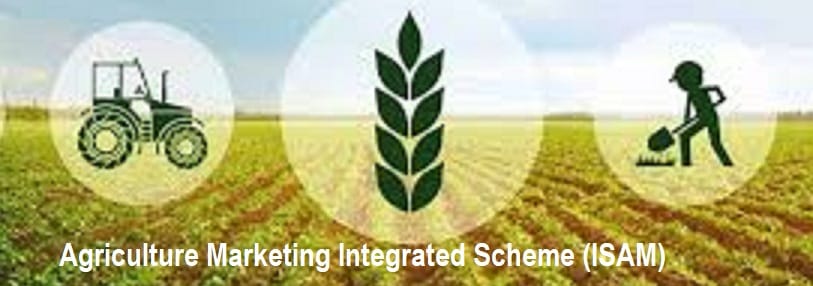
- Through the development and enhancement of market structures, capacity building, and the creation of access to market information, ISAM assists state governments in overseeing the marketing of agricultural products.
- The National Agriculture Market program, sometimes referred to as the e-NAM program, was included in the same for 2017–18. In order to establish a single national market for agricultural products,
- The National Agriculture Market (e-NAM) is an electronic trading system that connects the current APMC mandis throughout India.
- Over 1.76 crore farmers and 2.5 lakh traders have registered on the e-NAM portal, and 1389 mandis from 23 States and 4 UTs have been connected with the e-NAM platform.
7) Mission Organic Value Chain Development for North Eastern Region :

In the Northeast Region (Arunachal Pradesh, Assam, Manipur, Meghalaya, Mizoram, Nagaland, Sikkim, and Tripura), the MOVCDNER seeks to establish commodity-specific, concentrated, certified organic production clusters in value chain mode to connect growers with consumers and to support the development of the entire value chain, from inputs and seeds to the establishment of facilities for collection, aggregation, processing, marketing, and brand building initiatives. 379 FPO/FPCs encompassing 189039 farmers and 172966 hectares have been established since 2015–16 (as of 06.12.2023), with a total disbursement of Rs 1035.17 crore.

